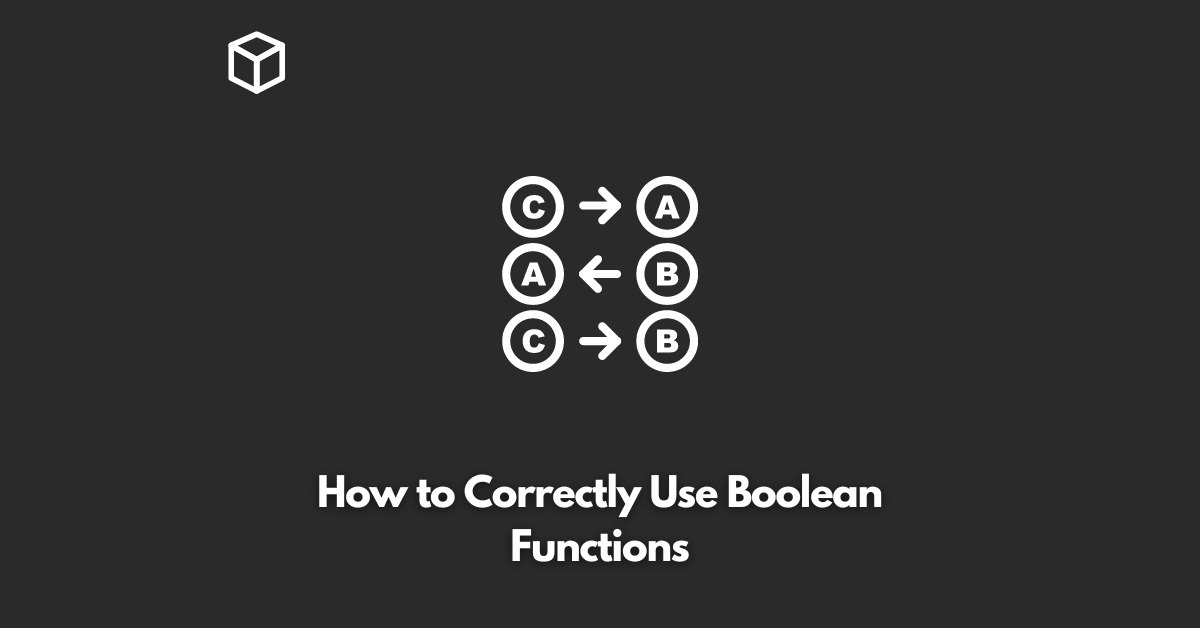Boolean functions are a fundamental part of computer science and programming.
They are used in a variety of applications and play a crucial role in decision making, data manipulation, and controlling the flow of program execution.
A boolean function can only return two possible values: true or false.
These values are often used to represent binary values such as on/off, yes/no, or 1/0.
In this post, we will go over the basics of boolean functions, how to use them correctly, and provide code examples in various programming languages.
Introduction to Boolean Functions
Boolean functions are named after the mathematician George Boole, who invented Boolean algebra.
In computer science, Boolean functions are used to perform logical operations on binary data and make decisions based on the results.
These functions are widely used in computer programming and are supported by almost every programming language.
Boolean expressions are created by combining one or more binary values using logical operators such as NOT, AND, OR, and XOR.
These expressions evaluate to either true or false and are used to control the flow of a program.
For example, in an if statement, a boolean expression is evaluated, and if it’s true, the code inside the if block is executed, and if it’s false, the code inside the if block is skipped.
Correct Usage of Boolean Functions
To use boolean functions correctly, it’s essential to understand how they work and how to combine binary values using logical operators.
In this section, we’ll go over some of the most common logical operators and how to use them.
AND Operator (&&)
The AND operator is used to combine two binary values and returns true if both values are true.
Otherwise, it returns false. The AND operator is often used to check if multiple conditions are met. For example:
if (age > 21 && salary > 50000) {
// code to execute if both conditions are true
}OR Operator (||)
The OR operator is used to combine two binary values and returns true if either of the values is true.
The OR operator is often used to check if at least one of the conditions is met. For example:
if (age > 21 || salary > 50000) {
// code to execute if either condition is true
}NOT Operator (!)
The NOT operator is used to negate a binary value. If the value is true, it returns false, and if the value is false, it returns true.
The NOT operator is often used to reverse the value of a boolean expression. For example:
if (!(age > 21)) {
// code to execute if age is not greater than 21
}XOR Operator (^)
The XOR operator is used to combine two binary values and returns true if exactly one of the values is true.
The XOR operator is often used to check if only one of the conditions is met. For example:
if (age > 21 ^ salary > 50000) {
// code to execute if exactly one of the conditions is true
}Conclusion
In conclusion, boolean functions are an essential part of computer science and programming.
They are used to perform logical operations on binary data and control the flow of a program.
Understanding how to use boolean functions correctly is critical for writing efficient and error-free code.
We hope this post has provided a good introduction to boolean functions and how to use them correctly.




